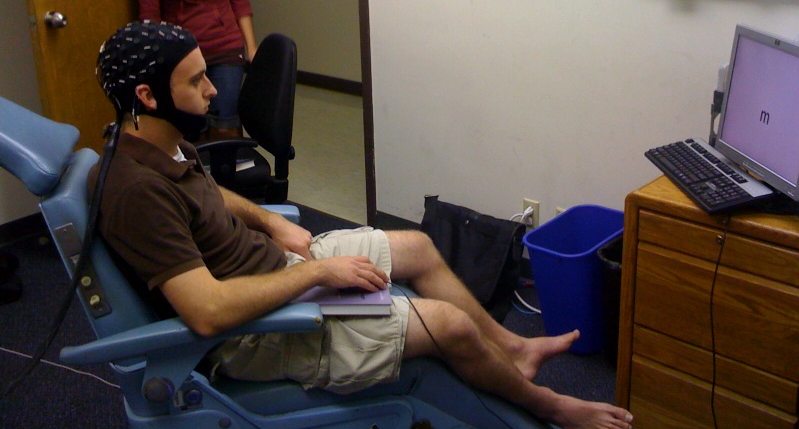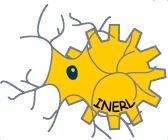-

The electroencephalography (EEG) laboratory is dedicated to the investigation of real-time neural processing using noninvasive technology. This laboratory is highly collaborative with other faculty such as Dr. Scott Beardsley in the Biomedical Engineering department, who studies error processing in the brain and Dr. Kristy Nielson in the Psychology department, who is looking to understand better the neural changes associated with aging. Our laboratory is complete with a Neuroscan Synamps2 amplification and recording system. This system is complimented with a 64 channel QuikCap (Neuroscan) and our new 64 channel actiCAP (Brainproducts), which is an active electrode system that allow for lower noise recording by amplifying the neural signals right at the scalp surface. Please take some time and read below to learn more about our ongoing research projects.
Measuring cortical signals while walking
The goal of this project is to obtain usable cortical signals during normal walking in humans. Previously our lab implemented a technique that used somatosensory evoked potentials (SEPs) as a probe to indirectly record small underlying cortical signals, even with the noise induced by movement. Currently we are developing an experiment that will concurrently measure the kinetics, kinematics, and EEG of the subject during treadmill walking. This will be realized with the use of a Bertec instrumented treadmill and a Vicon motion capture system, with our thanks to Dr. Allison Hyngstrom for the use of her equipment in this study. Recently we purchased a new active electrode actiCAP (Brain Products) that allows for recording of high quality EEG without the use of SEPs. This experiment will give a wealth of data to help understand how the cortex is involved during normal walking. Future work will look at the ability to measure modulation of cortical involvement during walking and compare this to different disabled populations.
Cortical processing of visual and proprioceptive error signals
The purpose of this project is to distinguish which brain sources are responsible for computing and processing visual and proprioceptive error signals. Subjects track a moving target on a computer screen with a cursor using a 1-D robotic manipulandum of which the position of the handle is yoked to the position of the cursor on the screen. During the tracking task, force perturbations will be applied to the subjects' wrists (i.e. proprioceptive error) or noise will be added to the position of the cursor on the screen (i.e. visual error) requiring subjects to correct for the error in order to accurately track the target. The resulting EEG data will be projected onto the subjects' MR-anatomies using source localization techniques to determine which brain regions are involved in the two types of error processing. This project is advised by Dr. Scott Beardsley.
Psychological inhibition study of Alzheimer’s Disease
This project examines the effectiveness of electroencephalography in distinguishing between individuals at risk for Alzheimer's disease and those who are not. The goals of the project include refining established diagnostic techniques, expanding the literature by using alternative and more advanced measures of memory and inhibition, and learning more about the typical neurological decline that comes with age. Findings will give us further insight into the Alzheimer’s disease diagnostic process as well as a better understanding of aging. This project is advised by Dr. Kristy Nielson.
